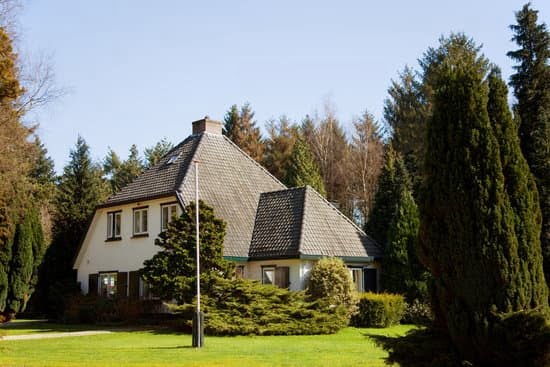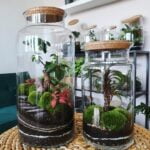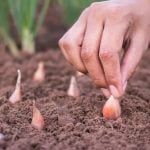Are you looking for creative ideas for herb gardens? Herb gardens are not only functional but also add a beautiful touch to any outdoor space. Whether you are interested in cooking with fresh herbs or utilizing them for their medicinal properties, having a creative herb garden can be a rewarding and enjoyable experience.
Herb gardens have been cherished for centuries for their culinary and healing properties. In today’s article, we will explore the world of herb gardening and share some creative ideas that can help you take your herb garden to the next level.
From choosing the right herbs to creating visually appealing layouts and unique container ideas, we will cover everything you need to know to cultivate a stunning and functional herb garden. Whether you have limited space or want to create a statement piece in your yard, this article will provide you with the inspiration and guidance you need to get started on your own creative herb garden journey.
Choosing the Right Herbs
When it comes to creating a herb garden, choosing the right herbs is essential for a successful and thriving garden. The first step in selecting the right herbs is considering the climate in which you live. Some herbs thrive in warm, sunny conditions while others prefer cooler temperatures and partial shade. It’s important to research the specific needs of each herb to ensure they will grow well in your area.
Another factor to consider when choosing herbs for your garden is the type of soil you have available. Some herbs prefer well-draining soil, while others can tolerate clay or sandy soil. Understanding your soil type will help you select the best herbs for your garden and provide them with optimal growing conditions.
In addition to climate and soil considerations, it’s also important to think about the space available for your herb garden. If you have limited space, consider planting compact herbs such as thyme or chives that can thrive in small areas. For larger spaces, you may want to include sprawling herbs like mint or oregano that can spread out and fill more space.
| Herb | Preferred Climate |
|---|---|
| Basil | Warm, sunny conditions |
| Lavender | Dry, hot climate; well-draining soil |
| Rosemary | Warm climate; well-draining soil |
| Parsley | Cooler temperatures; partial shade |
As seen from the table above, different types of herbs have varying preferences when it comes to climate and growing conditions. By understanding these differences and selecting the right herbs based on their needs, you can create a successful herb garden that will flourish and provide an abundance of fresh ingredients for culinary and medicinal use.
When choosing which herps should go into your creative ideas for herb gardens always take into consideration the factors related with where you plan on placing them so they can grow harmonically according to their necessities.
Container Herb Gardens
When space is limited, a container herb garden offers an ideal solution for those who still want to enjoy the benefits of growing fresh herbs. Here are some creative ideas for herb gardens in containers:
- Vertical planters: Utilize vertical space by using hanging or wall-mounted planters to grow a variety of herbs. This not only saves space but also adds an interesting visual element to your garden.
- Repurposed containers: Get creative by using unconventional items as planters, such as old teapots, tin cans, or even wooden crates. Not only does this add a unique touch to your garden, but it also promotes sustainability by repurposing items that would otherwise be discarded.
- Tiered planters: Create a visually appealing display by using tiered planters to showcase different herbs at varying heights. This not only maximizes space but also allows for easy access to each herb.
Regardless of the container type chosen, it’s important to consider proper drainage and adequate sunlight for the herbs to thrive. With some creativity and resourcefulness, anyone can create a stunning container herb garden even with limited space.
In addition to their practical benefits, container herb gardens can also serve as decorative elements in outdoor spaces, adding charm and functionality to patios, balconies, or even windowsills. The versatility of container gardening allows individuals to experiment with different styles and designs that suit their preferences, making it an accessible option for both novice and experienced gardeners alike.
Ultimately, container herb gardens provide an opportunity for individuals to incorporate greenery and natural fragrance into their living spaces while reaping the rewards of homegrown herbs that enrich culinary experiences and promote overall well-being. With a little imagination and effort, anyone can cultivate a thriving container herb garden that enhances both aesthetics and practicality.
Vertical Herb Gardens
For those interested in creating their own vertical herb garden, there are numerous creative ideas that can be implemented. One such idea is utilizing recycled materials such as wooden pallets, old ladders, or even PVC pipes to create a multi-level herb garden. These materials not only add an eco-friendly aspect to the garden but also provide an opportunity for upcycling and repurposing items that would otherwise go to waste.
Another creative idea for vertical herb gardens is incorporating hanging planters or wall-mounted containers. This allows for herbs to be grown in unconventional spaces such as balconies, patios, or even inside the kitchen. Additionally, these hanging planters can be mixed and matched for a visually stunning display of different herb varieties.
Furthermore, individuals can get innovative with the placement of their vertical herb gardens by integrating them into other elements of their outdoor living space. For example, incorporating a vertical herb garden into a trellis structure for climbing plants or adding it onto the side of a shed can create an eye-catching focal point in the garden while also providing fresh herbs for culinary use.
By exploring these creative ideas for vertical herb gardens, individuals can incorporate functionality and beauty into their living spaces while reaping the benefits of having fresh herbs readily available for cooking and medicinal purposes. Whether it’s through DIY projects or integrating unique designs, the possibilities for creating a captivating vertical herb garden are endless.
Herb Garden Design
When it comes to herb garden design, there are countless creative ideas that can turn your garden into a visually stunning and functional space. The aesthetics of herb gardens are just as important as their practical uses, so it’s essential to consider elements like color, texture, and layout when designing your herb garden.
One creative idea for herb garden design is to incorporate a variety of colors and textures by mixing different types of herbs in one area. For example, you can combine the bright green leaves of basil with the purple flowers of lavender and the delicate fronds of dill to create a visually striking and diverse herb garden. Consider creating patterns or symmetrical designs with your different herbs to add visual interest to your garden.
Another aspect of herb garden design to consider is the layout and organization of your plants. You can create aesthetically pleasing designs by arranging your herbs in geometric patterns, spiral shapes, or even themed arrangements.
For instance, you can create a “pizza garden” with herbs like oregano, basil, and thyme arranged in a circular pattern to mimic the toppings of a pizza. These unique layouts not only add visual appeal but also make it easier to access and maintain your herbs.
In addition to the plants themselves, incorporating decorative elements into your herb garden adds flair and personality to the space. Consider adding features like colorful signage with the names of each herb, decorative stakes or markers for each plant, or even seating areas where you can relax and enjoy the beauty and aroma of your herbal oasis.
Creative herb garden design is all about personal expression and finding unique ways to showcase both the beauty and functionality of your beloved herbs.
Herb Garden Maintenance
Maintaining a herb garden is essential for ensuring the health and productivity of your plants. Proper care, including watering, fertilizing, and pruning, is crucial for optimal growth. Watering should be done as needed, ensuring that the soil remains moist but well-drained. Overwatering can lead to root rot, while under-watering can cause wilting and poor growth.
Fertilizing is also important for providing essential nutrients to the herbs. Organic fertilizers are recommended for herb gardens to avoid chemical buildup in the soil. Pruning your herbs regularly not only encourages bushier growth but also helps prevent diseases by improving air circulation.
Pest control is another aspect of herb garden maintenance that cannot be overlooked. It’s important to keep an eye out for common pests like aphids and caterpillars that can damage your plants. Using natural remedies such as insecticidal soap or neem oil can help keep these pests at bay without harming beneficial insects like bees.
Lastly, mulching can be beneficial for conserving moisture, suppressing weeds, and maintaining a consistent soil temperature in your herb garden. Mulch also adds organic matter to the soil as it breaks down over time. These are all important aspects of herb garden maintenance that contribute to the overall health and success of your herb garden.
| Aspect | Tips |
|---|---|
| Watering | Keep soil moist but well-drained; avoid overwatering |
| Fertilizing | Use organic fertilizers; avoid chemical buildup |
| Pruning | Encourage bushier growth; prevent diseases by improving air circulation |
| Pest Control | |
These tips will help you maintain a healthy and thriving herb garden that will provide you with an abundant supply of fresh herbs throughout the year.
Creative Herb Garden Recipes
Using fresh herbs from your garden can elevate the flavor of your dishes and add a unique touch to your culinary creations. Here are some creative and delicious recipes that make use of fresh herbs in surprising ways.
Herb-Infused Cocktails
Get creative with your favorite cocktails by infusing them with fresh herbs from your garden. Try adding basil to a mojito, rosemary to a gin and tonic, or lavender to a refreshing lemonade. The aromatic flavors of the herbs will complement the drinks, adding an interesting twist to your beverage offerings for gatherings or simply enjoying a relaxing evening at home.
Fresh Herb Pesto
Pesto is a versatile sauce that can be used as a condiment, dip, or spread for sandwiches and wraps. While traditional pesto is made with basil, you can experiment with different herbs like cilantro, parsley, or even mint to create unique pesto variations. Blend the fresh herbs with garlic, nuts, olive oil, and Parmesan cheese for a flavorful and aromatic sauce that can be used in countless ways in the kitchen.
Herb-Infused Oils and Vinegars
Infusing oils and vinegars with fresh herbs from your garden is an easy way to add depth of flavor to your dishes. Simply place sprigs of herbs like thyme, oregano, or dill in bottles of olive oil or vinegar and let them sit for a few weeks. The resulting infused oils and vinegars can be drizzled over salads, used as marinades for meats and vegetables, or incorporated into homemade salad dressings.
These creative herb garden recipes offer just a glimpse into the many ways you can utilize the abundance of fresh herbs from your garden in the kitchen. Experiment with different flavor combinations and don’t be afraid to get adventurous with your herb-infused creations. The possibilities are endless when it comes to incorporating these fragrant and flavorful herbs into your cooking.
Herb Garden Décor
When it comes to creating a herb garden, the design and dcor play an essential role in making the space visually appealing and functional. Incorporating creative elements into herb gardens can elevate the overall aesthetic and add a personalized touch to the space. From decorative features to functional elements, there are many creative ideas for herb garden dcor that can enhance the beauty of the garden while also serving practical purposes.
Decorative Elements
One of the key aspects of herb garden dcor is incorporating decorative elements that complement the natural beauty of the herbs. Consider adding features such as colorful ceramic planters, whimsical garden sculptures, or handmade mosaics to create visual interest in the garden. These decorative elements not only add personality to the space but also create a welcoming and vibrant atmosphere for both growers and visitors alike.
Functional Additions
In addition to decorative elements, incorporating functional additions into herb gardens can enhance their practicality and usability. Some creative ideas for functional dcor include adding signage for each herb, creating pathways with decorative stepping stones, or installing seating areas where growers can relax and enjoy the beauty and fragrance of their herbs. These functional additions not only serve a purpose but also contribute to the overall charm of the herb garden.
Personalized Touches
Adding personalized touches to a herb garden can make it feel like a unique and special space. Consider incorporating DIY projects such as hand-painted plant markers, customized herbal tea stations, or even hanging personalized artwork or photographs related to herbs and gardening. These personalized touches add sentimental value to the garden and create a deeper connection between growers and their plants.
By incorporating these creative ideas for dcor into herb gardens, growers can transform their outdoor spaces into beautiful, inspiring, and functional areas that reflect their personal style and love for gardening. Whether it’s through decorative elements, functional additions, or personalized touches, there are endless possibilities for enhancing the beauty of a herb garden with creative dcor.
Conclusion
In conclusion, herb gardens are not only a valuable addition to any home but also an opportunity for creativity and self-expression. From choosing the right herbs to maintaining and designing the garden, there are endless possibilities for creating a unique and visually appealing herb garden. The benefits of herb gardening extend beyond just culinary or medicinal purposes, as it also provides a therapeutic and rewarding experience for the gardener.
When it comes to creative ideas for herb gardens, the options are truly limitless. Whether it’s experimenting with container gardening in small spaces, building vertical herb gardens using recycled materials, or incorporating decorative elements into the garden design, there is no shortage of inspiration. The key is to explore different possibilities and find what works best for your space and personal style.
As we wrap up this exploration of creative ideas for herb gardens, I encourage readers to not only take inspiration from the suggestions provided but also to share their own innovative ideas with the community. By exchanging tips, recipes, and design concepts, we can continue to inspire one another and cultivate beautiful and thriving herb gardens that enhance our lives in numerous ways.
So go ahead, unleash your creativity and let your herb garden be a reflection of your unique personality and passion for gardening.
Frequently Asked Questions
How Do I Make My Herb Garden Pretty?
Making your herb garden pretty can be achieved by using decorative pots or planters, arranging the herbs in an aesthetically pleasing way, and incorporating other decorative elements such as small garden ornaments or colorful stones.
What Can I Do With My Herb Garden?
There are many things you can do with your herb garden. You can use the herbs for cooking, make herbal teas, create homemade skincare products, or even use them for natural home remedies. Herbs can also be dried and preserved for later use.
What Herbs Grow Best Together?
Some herbs grow best together due to their similar cultural requirements. For example, basil and oregano thrive in the same conditions of well-drained soil and full sun. Similarly, parsley and chives also complement each other’s growth habits and growing needs, making them good companions in the herb garden.

Welcome to my gardening blog! I am passionate about plants and enjoy sharing my knowledge and experiences with others. In this blog, I will write about everything related to gardening, from tips on how to get started to updates on my own garden projects.





